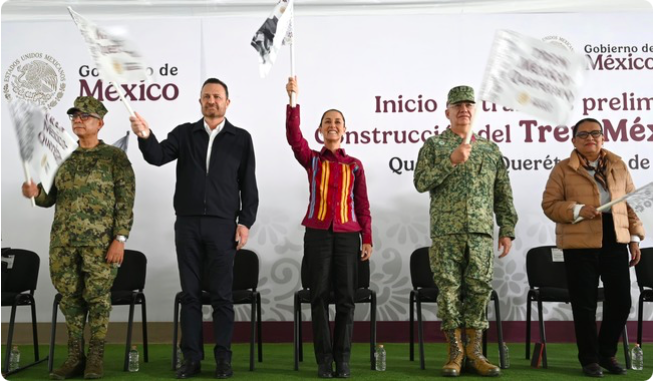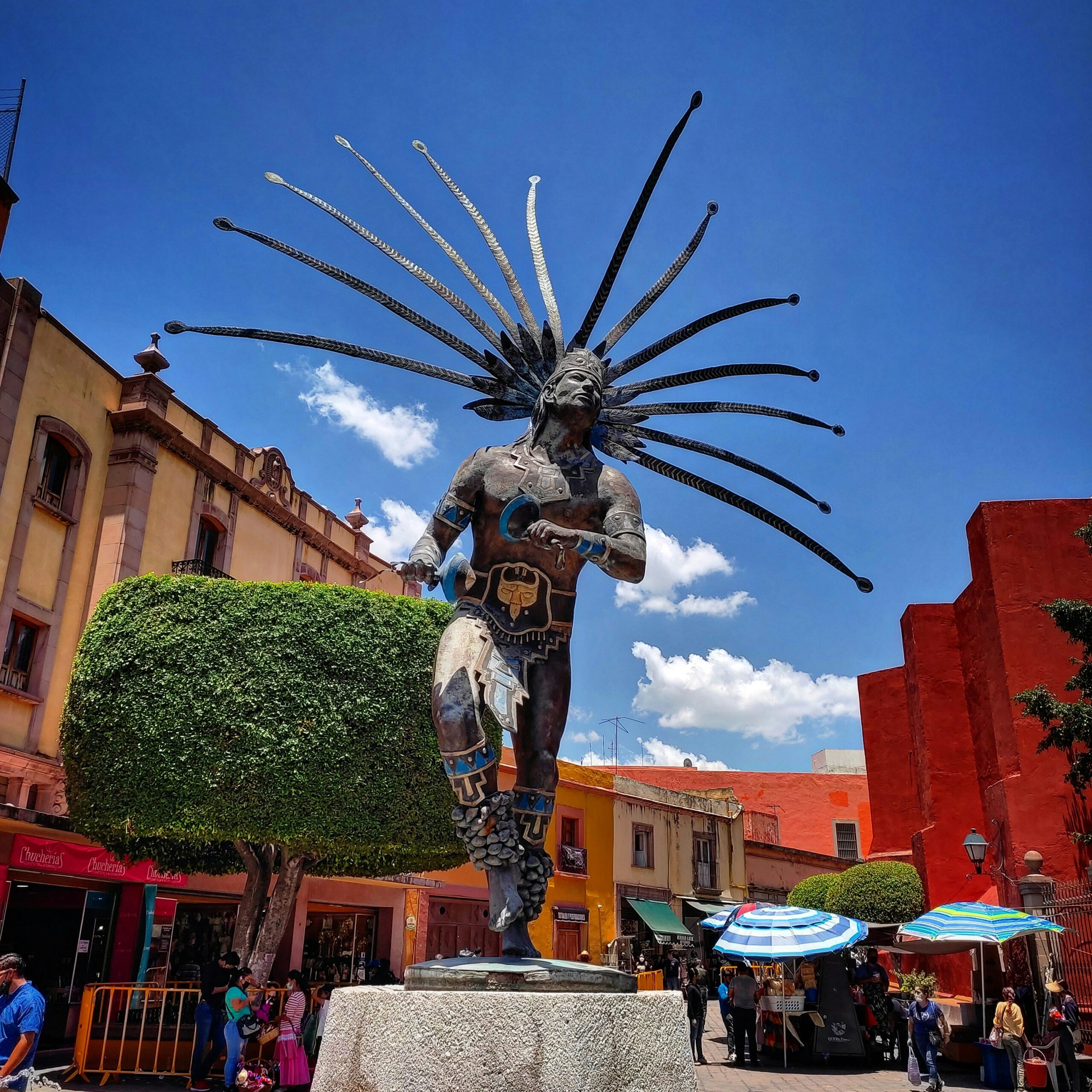On October 13, the President of Mexico, Claudia Sheinbaum Pardo, and the Governor of Querétaro, Mauricio Kuri González, inaugurated the preliminary work on the Mexico-Querétaro train. According to the President, the entity responsible for this construction is the Engineer Group “Felipe Ángeles” from the Ministry of National Defense.
President Sheinbaum Pardo also mentioned that the train would be ready in three years, fostering Querétaro’s and Mexico’s central development. Further, Governor Kuri González highlighted that the train is a safe and modern alternative, improving the quality of life for citizens and visitors.

The Mexico-Querétaro train is expected to be completed in three years. Then, the required studies for the project preparation will be conducted between now and April 2025. Additionally, the master plan of this train includes future expansion toward northern Mexico, reaching Nuevo Laredo and Nogales.
Other government entities involved in the project include the Ministry of Infrastructure, Communications and Transport and the Ministry of the Environment. It is important to note that this project results from collaboration between the Federal government and Querétaro´s government which is in charge of securing the rights of way.
According to Statista’s 2019 survey on train efficiency, Japan and Hong Kong ranked first and second with scores of 6.8 and 6.5. The United States ranked 12th with a score of 5.5, while Germany and Russia both scored 4.9. Statista divides passenger trains into two categories: 1) intercity trains, which cross multiple cities and are usually operated by state-owned or nationally subsidized companies, and 2) urban trains, which operate within a single city or metropolitan region, often connecting with suburban trains, metro, and light rail systems.

Commander Gustavo Ricardo Vallejo Suárez explained that the collaboration agreement between SEDENA and SICT will allow efficient use of human, technical, and material resources, creating new jobs. Further, Commander Vallejo said the train will span 225 kilometers, 35 kilometers less than the current cargo route.
Moreover, Secretary of Infrastructure, Communications, and Transport, Jesús Antonio Esteva Medina, reported that the train would traverse Mexico City, the State of Mexico, Hidalgo, and Querétaro in about one hour and 40 minutes. The trains are expected to hold up to 450 passengers.
Additionally, the Mexico-Querétaro train will reach speeds of up to 160 kilometers per hour. It will have three stations in Buenavista, San Juan del Río, and Santiago de Querétaro. Also will be built 77 bridges, 12 tunnels, three viaducts, two bypasses, and two railway interchanges.

Among the cabinet members at this event were the Secretary of the Interior, the Secretary of National Defense, the Secretary of the Navy, the Secretary of Public Function, the Director of the Regulatory Agency for Railway Transport, and the Director of the National Water Commission.
At IP Consultores, we celebrate the federal government’s vision of constructing an ambitious infrastructure project like the Mexico-Querétaro train. This team, also acknowledges the importance of the federal government’s coordination with local governments, like Querétaro’s, to ensure this project’s success.
We hope the Mexico-Querétaro train will be one of the first railway projects to boost the development of this industry in Mexico. Developing a hemispheric railway infrastructure will connect cities across the continent and facilitate more efficient movement of people and goods.

Additionally, we celebrate the collaborative spirit between federal and state authorities. We believe Mexico’s future is promising in this century. The Federal government and the government of Querétaro are setting an example of commitment to building a more prosperous country with better opportunities.
In the long term, this infrastructure will act like a bloodstream that carries life through the body, fostering greater market and societal integration across the region. Finally, at IP Consultores we urge that Mexico’s example of railway transportation development be replicated throughout the hemisphere, from Canada to Argentina.



0 comentarios